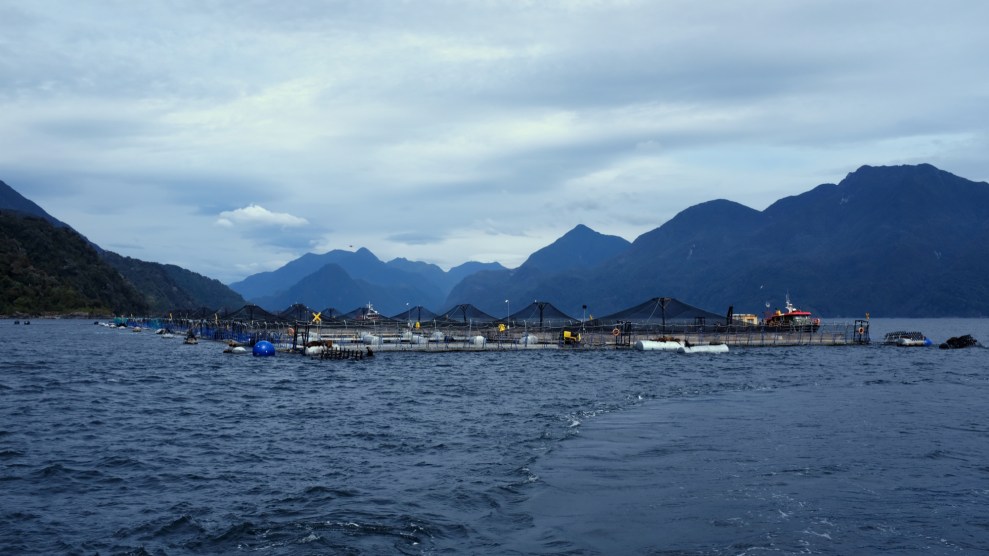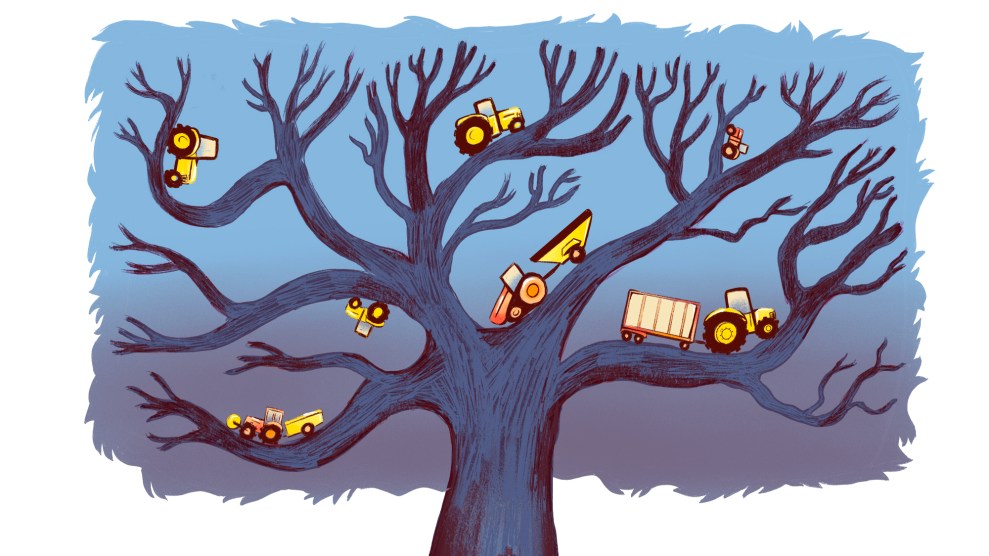The farm bill is one of the most important but least understood pieces of US legislation, and it’s overdue for renewal. But Congress couldn’t pass a new version in the fall, reflecting partisan dysfunction and also a contentious debate about what the bill ought to be—a debate that has become ensnared in the nation’s culture wars. Racial equity, food sovereignty, protections for workers, and meaningful action on climate change have broadened the bill’s traditional mandate of growing food and feeding hungry people. In this special series, a partnership with the Food and Environment Reporting Network, we’ll be exploring some of the urgent issues a new farm bill must address. Read the other stories in the series here.
Like a reveler who chases each of many tequila shots with a seltzer, US farm policy consists of comically clashing impulses likely to result in a nasty hangover.
The Department of Agriculture doles out substantial subsidies each year to entice farmers to maximize production of corn and soybeans. These commodities account for about 60 percent of US farmland, are used to fatten animals on factory farms, and deliver many of the sugars and fats in our ultraprocessed diets. Unsavory side effects of their production include planet-warming emissions, soil erosion, and polluted waterways.
Since 1985, the USDA has also offered farmers cash to adopt conservation practices meant to help counter those troublesome impacts. Growers can make extra money by adding soil-stabilizing crops such as rye and oats to their rotations or by establishing filter strips of grasses or legumes, which are designed to trap chemical runoff. The catch is that a large amount of federal money—about $14 billion per year on average between 1995 and 2021—goes toward promoting commodity crops, compared with just $1.8 billion for conservation. So, for every dollar the department flashes in front of farmers to encourage them to grow to the max, it dangles just 13 cents to help them manage their land judiciously.
Congress has maintained this imbalance for decades through the farm bill—the twice-per-decade legislative package that governs agriculture policy—a process that is replete with lobbying and campaign donations from agribusinesses that benefit. The gusher of cash for commodities production has been even more prodigious in recent years thanks to temporary subsidies to offset losses from trade wars and the pandemic: In 2020, commodity and crop insurance payouts dominated conservation outlays by more than 22-to-1.
A smarter approach, says Silvia Secchi, a natural resources economist at the University of Iowa, is to make conservation a prerequisite. Want goodies from the USDA? Then show us your plan for preserving topsoil, controlling runoff, and slashing greenhouse gas emissions. The safety net would be contingent on farmers helping to preserve the ecosystems on which their livelihood relies. In short, taxpayers would get more bang for their buck. Participation could be voluntary—farmers would continue to grow how and what they choose—but “if you do take government subsidies, you should do something for them,” Secchi argues.
This concept has precedent. In the 1970s, President Richard Nixon’s USDA secretary, Earl Butz, urged farmers to “plant fencerow to fencerow”—use every inch of land, hedgerows and riparian buffers be damned—to take advantage of what turned out to be a short-lived boom in corn and soybean exports. Prices soared and then tumbled, spurring farmers to keep squeezing their land to maximize output, causing massive erosion. Things got so bad that Congress felt compelled to act; the 1985 farm bill decreed that any farm that wanted federal help growing crops on land that the USDA deemed “highly erodible” had to come up with a plan to retain its topsoil. “Conservation compliance,” as this policy is known, became law despite “strong resistance from farm interests,” writes Jonathan Coppess, director of the agriculture policy program at the University of Illinois, in his forthcoming book, Between Soil and Society.
Those requirements remain in effect today, but enforcement is spotty, according to a 2016 report by the USDA’s inspector general. And the ’85 rules did nothing to slow the surge in corn production triggered by the government-backed ethanol program that began in 2007. Not surprisingly, erosion has continued. Farmland in the Corn Belt is now losing soil at least 10 times faster than the soil forms naturally—roughly one-third of this area has seen its topsoil fully wash away.
Secchi says it’s time to apply conservation compliance to all farmland that receives federal support and to dramatically ramp up enforcement. That’s unlikely in the current Congress, but Secchi has hope for the future. “Climate change is finally being taken seriously, at least in terms of the money we’re putting in,” she says, referring in part to the Inflation Reduction Act’s $19.5 billion for agricultural conservation programs. Aligning farm support and conservation goals would be a crucial step to ensuring that helping America’s farmers doesn’t mean degrading our land and fouling our water.















